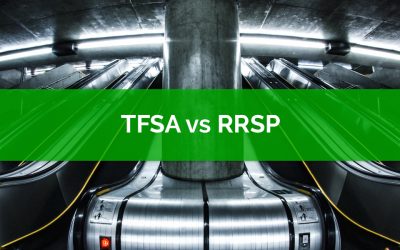Congratulations! You’re on the waitlist!
We will e-mail you before the bootcamp launches for an exclusive preview.
Check out our latest blog posts…
Setting Financial Goals: A List of 16 Short and Long Term Money Goals
Setting a goal can have amazing results.
Even just thinking about your goals will give you a higher chance of achieving them. Writing down your goals will improve your chances again. Revisit your goals regularly and your chances get even better!
The chance of hitting your goals will improve by 80% when you write them down and create a plan.
I love goals, especially financial goals.
One of our previous financial goals was to pay off our mortgage early. We did this in exactly five years! At the end of the post I’ll share with you our original plan and how it actually went down (because things never go according to plan).
TFSA vs RRSP? Picking The Right One Could Save You $100,000+ In Tax
Both TFSA and RRSP are great, but they’re also different. These tax-advantaged accounts each have their own pro’s and con’s.
If you only have a set amount to invest each month, it’s important to pick the “right” account.
The “right” account can change over time as your income and personal circumstances change.
Each account, TFSA vs RRSP, deals with taxes differently. Choosing the right account will help you save $100,000+ in tax over your lifetime. Who would say no to $100,000?!?
By choosing the right tax-advantaged account, you can actually save less each month and still achieve all your financial goals.
Tax Shelters For Every Canadian
When you think “tax shelters” you probably picture some Caribbean island. But did you know that the average Canadian has access to 2-3 tax shelters of their very own?!?!
The average Canadian family can shelter 32% of their gross income every year! They can do this in accounts that either defer or avoid taxes.
What is a tax shelter? In the broadest sense….
“A tax shelter is a financial arrangement made to avoid or minimize taxes.”
But let’s clarify something for a second, avoiding taxes is completely legal and it’s an important financial planning strategy.
What isn’t legal is tax evasion. Tax evasion is the illegal underpayment of your taxes. Tax evasion is basically when you ignore tax rules and use some tax-saving scheme. This is done through shady accounting practices or stashing money in offshore accounts in tax-havens like the Caribbean.
Every Canadian has access to a few different tax-sheltered accounts to help them legally minimize their taxes.
Tax-sheltered accounts are extremely useful because they help you delay, reduce or even avoid paying taxes all together. Using these accounts in the right way can help you avoid paying thousands of dollars in taxes and can even help you boost your government benefits!
Reducing taxes is an important component of any financial plan. Unfortunately, most Canadians don’t maximize their tax-sheltered accounts.
The average Canadian family can shelter 32% of their income each year in accounts that either defer or avoid taxes*. In this post we cover the three common tax-sheltered accounts of which every Canadian should be aware.



